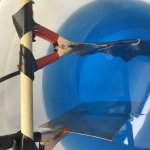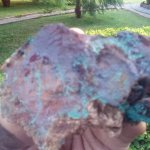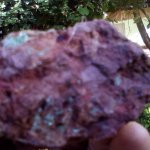- To participate in the 911Metallurgist Forums, be sure to JOIN & LOGIN
- Use Add New Topic to ask a New Question/Discussion about Hydrometallurgy.
- OR Select a Topic that Interests you.
- Use Add Reply = to Reply/Participate in a Topic/Discussion (most frequent).
Using Add Reply allows you to Attach Images or PDF files and provide a more complete input. - Use Add Comment = to comment on someone else’s Reply in an already active Topic/Discussion.
How to leach 20%-40% copper ore (6 replies and 4 comments)
Not all copper ores are acid soluble especially sulfides. It could also be that you dont have the material ground fine enough. Heating will also help with the dissolution. Also leach times can be much longer upwards of 24 to 48 hours.
Your acid concentrations should be OK and I suspect it is the other issues.
Regards
Todd Harvey - Global Resource Engineering http://www.global-resource-eng.com
Tawaz,
First thing you need to do: dry and split (how are you splitting your samples?) your tails from the leaching and run an XRF on that. Post those results here.
It would really help to have a few coventional assays done in order to -
A: check/calibrate your XRF against that kind of ore (BTW as a fellow “poor boy” copper miner I’m a little jealous you have one - how’d you come by that?)
B: you need a “Total Cu” and an “Acid Soluble Cu” test to determine how much copper is recoverable with leaching
C: An assay of your pregnant and barren leach solutions wouldn’t hurt.
D: You need an acid consumption test. Some ores are like “trying to leach a roll-aid”. Note: if you want to try this at home and have the lab supplies I’ll post instructions for a titration.
What region are you in? (i.e. Nevada or Arizona?) I recommend Skyline Labs and have a good working relationship with them. They have a $300 minimum order, but individual tests are $9.65 a pop if you’ve already prepped the samples. I wouldn’t mind pooling a few samples I need sent off for assay with yours to meet that order threshold.
If you going to be doing this for awhile, I’d also spend a few hundred dollars in reagents and lab supplies to run KI method titration assays. The chemistry is a little involved, but the process is quick and cheap.
As for processing:
One option depends on how many tons you have. If you’re running 100kg to 500kg batches I assume you’ve got a lot of ore to work with. If you have over say... 500 tons and it consistently assays 20-40% I’d look at shipping it direct to the smelter. Again, this depends on where you are located.
Another option: instead of cementing the copper with scrap, I would try electrowinning. Cathode copper is much more saleable and easily handled. Any scrapyard with an XRF would love you.
Finally, would you mind posting a picture of your vat and agitation setup? I’d love to compare notes with your design.
Hie Steve, I'm unfortunately in a very rural part of Zimbabwe and access to labs is nil. The xrf I use is unfortunately not mine and is from a mine 90kms away, by very bad dirt road.
My tails showed 21% copper from the original 32%.
Had the initial wet analysis done but can't do continuously becoz of my location and cost.. let me make the big bucks first and I'll set up my own lab.
I will assay my solutions as suggested, just worked on the assumption tht all clear meant nothing left
I'd love to electrowin but can't afford the plant, any ideas on how I can make my own.
The resource is huge and there's definitely a lifetime of work
Pls send info on the acid consumption tests
As for the agitation I have guys actually manually stirring the stuff every 15min with large wooden paddles
Tawaz:
Try a leach test at 10% H2SO4, just for grins and giggles. Also, try dropping your solids to liquid ratio down to 1:3. And, like Todd said: give it 24 to 48 hours. (If’s doing a long leach, you could do away with the guy on the paddle for that one.)
For best results, change one variable at a time and see what happens.
Since assays are a problem, keep doing what you’re doing: precipitate/cement until you get a clear solution and weigh your end dry product.
It would help to post those results here.
Also, can you post a few pictures of your ore?
Side question: what’s your cost of mining/mining method?
As for Electrowinning: your power supply should provide low voltage and high current. So a battery charger, cannibalized welder, or even solar panels would work. You want the voltage as low as possible or the copper will plate out as a sponge/powder. You need a copper sheet as a “starter sheet” and hook up your negative power. That’s your cathode. Hook up your positive to a stainless steel or lead plate. That’s your anode.
I’ll attach a picture of a “bucket test” setup I did last week. I used a battery charger for power supply and made sponge copper because the voltage was too high.

Thanks steve, I will try varying the different parameters and post results. I'm aware increase in acid concentration can make the whole thing not viable. Pls can you post the acid consumption test I can do on my own, it will help with tracking costs.
I'm using basic underground mining drill and blasting. It's labour intensive so quite low cost as labour costs are low here
I will get someone a bit technical to try hook up the plant you posted.
Please join and login to participate and leave a comment.



Hie guys, I own a small copper claim with ores of up to 40% ( xrf ). I can't sell it as it is and I don't have the capital to buy any fancy equipment to beneficiate it. I am not a metallurgist, don't have a reliable lab to consult with and desperately need tips on the simplest route to take. I took a 32% ore sample ( xrf ) and tried leaching with 5% acid, 1:2 solid to liquid with manual agitation in small vats for 2 hours. i decanted the pregnant solution and repeated the process. I then cemented with scap until the solution was practically colourless. The resulting concentrate was about 92% ( xrf ) but from 100 kgs I only got 7kgs which is less than 30% recovery. Please assist with tips on best acid concentration solid to liquid ration, leach time, number of leach cycles doing 500kg batches and any other pertinent information.
Tips on how to make blister would be appreciated I have never done it before and could build a simple furnace. What flux to use and the mix ratios.
Looking forward to hearing from all you brilliant minds